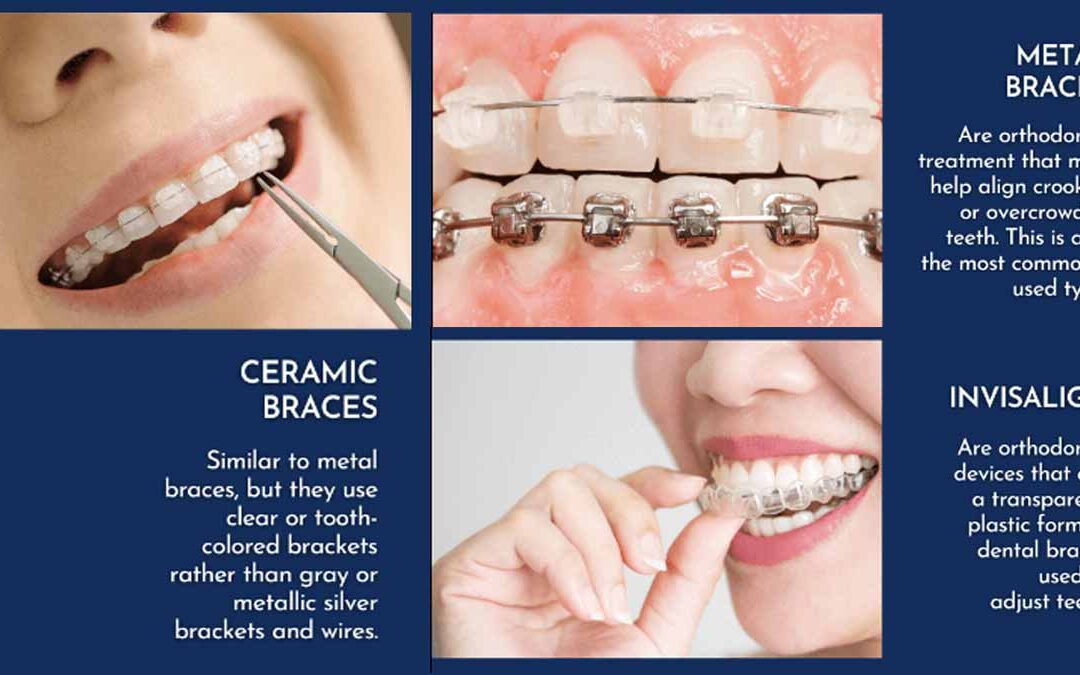Dental braces are a common orthodontic treatment for patients of all ages looking to improve their smiles. With numerous options available today, it can be challenging to decide which type of braces is best for your unique needs. In this article, we will compare traditional braces, clear braces, and Invisalign, discussing their benefits, drawbacks, and specific use cases. Afdent Dental believes that by understanding the differences between these treatments, you will be able to make an informed decision about your orthodontic care.
Traditional Braces: The Classic Choice
Traditional braces, also known as metal braces, have been used for decades to correct various dental issues, including crooked teeth, overcrowding, and bite problems. They consist of metal brackets attached to each tooth, connected by an archwire that applies constant pressure to gradually move teeth into the desired position.
Pros of Traditional Braces
- Effective treatment: Traditional braces are highly effective in treating complex orthodontic issues.
- Affordable: Metal braces tend to be the most affordable option among the three types discussed in this article.
- Durable: Made from stainless steel, traditional braces are strong and resistant to breakage.
Cons of Traditional Braces
- Visibility: Metal braces are the most noticeable type of braces, which some patients may find unappealing.
- Discomfort: The brackets and wires can cause discomfort and irritation, especially when adjusted or tightened.
- Food restrictions: Patients with traditional braces must avoid certain foods that could damage the brackets or wires, such as hard, sticky, or chewy items.
Clear Braces: A More Aesthetic Option
Clear braces, or ceramic braces, function similarly to traditional braces but are made with tooth-colored materials, making them less visible. They are an excellent option for those who want an effective treatment without the noticeable appearance of metal braces.
Pros of Clear Braces
- Aesthetics: Clear braces are less noticeable than traditional braces, making them a more appealing choice for image-conscious patients.
- Effective treatment: Like traditional braces, clear braces can effectively treat various orthodontic issues.
Cons of Clear Braces
- Higher cost: Clear braces are typically more expensive than traditional braces due to the materials used.
- Staining: The ceramic brackets can stain if not properly maintained, which can affect their appearance.
- Less durable: Clear braces can be more prone to breakage than traditional braces.
Invisalign: The Invisible Alternative
Invisalign is a modern orthodontic treatment that uses a series of custom-made, clear plastic aligners to gradually shift teeth into their desired position. Unlike traditional and clear braces, Invisalign does not involve brackets or wires, making it nearly invisible and removable.
Pros of Invisalign
- Aesthetics: Invisalign’s clear aligners are virtually invisible, allowing patients to undergo treatment discreetly.
- Comfort: With no brackets or wires, Invisalign is generally more comfortable than traditional or clear braces.
- Flexibility: Patients can remove Invisalign aligners when eating or cleaning their teeth, eliminating food restrictions and making oral hygiene easier.
Cons of Invisalign
- Higher cost: Invisalign tends to be the most expensive option among the three types discussed in this article.
- Not suitable for all cases: Invisalign may not be effective for severe orthodontic issues and may not be suitable for all patients.
- Compliance: Because the aligners are removable, patients must be disciplined in wearing them for at least 20-22 hours per day for the treatment to be effective.
Common Patient Questions and Concerns
Maintenance
- Traditional and clear braces: Patients must carefully clean around the brackets and wires, using special tools like interdental brushes and water flossers.
- Invisalign: Patients should clean their aligners with a soft toothbrush and mild soap or use Invisalign cleaning products.
Possible Side Effects
Temporary discomfort or soreness is common when first receiving braces or after adjustments. Some patients may experience minor speech difficulties or increased saliva production with Invisalign.
Take the Next Step
Choosing the right orthodontic treatment is crucial for achieving your desired smile. By understanding the benefits and drawbacks of traditional braces, clear braces, and Invisalign, you should be able to make an informed decision about which option is best for you. To learn more about these treatments and discuss your specific needs, book an appointment with our dental experts today.


